Keeping water quality safe
We've provided high-quality, reliable and cost-effective water services for 115 years and are safeguarding our system for generations to come.

Next Steps Regarding Your Unknown or Galvanized Service Line
If you received a letter from the city regarding your service line, read carefully to determine if you have galvanized or unknown service line material. Here's what you need to know.
- The City will contact you with next steps.
- If a replacement is required, the City will work with you to replace your service line. View your service line on the interactive map.
-
There are steps you can take to reduce your potential risk of lead exposure:
- Use water filters certified to remove lead.
- Clean your aerator (your faucet's screen).
- Use cold water. Boiling water does not remove lead from water.
New rules, same high-quality drinking water
As part of the Environmental Protection Agency's (EPA) Lead and Copper Rule Revisions (LCRR) the City is identifying and cataloging the community's water service lines. Since starting field investigations in 2021, we have not found any lead lines. If one is found, the City will notify and inform you of next steps.
Service Line Inventory
In March of 2024, the City completed its initial field investigations of water service lines. The results of these investigations, combined with historical records of the City's infrastructure create the City's water service line materials inventory. This inventory was submitted to the Arizona Department of Environmental Quality (ADEQ) in October 2024 and is now available for public view.
Over the next several years, we will continue to further investigate and identify any materials published as “unknown” in the inventory and take steps to replace lead or galvanized requiring replacement (GRR) lines.
View service line inventory map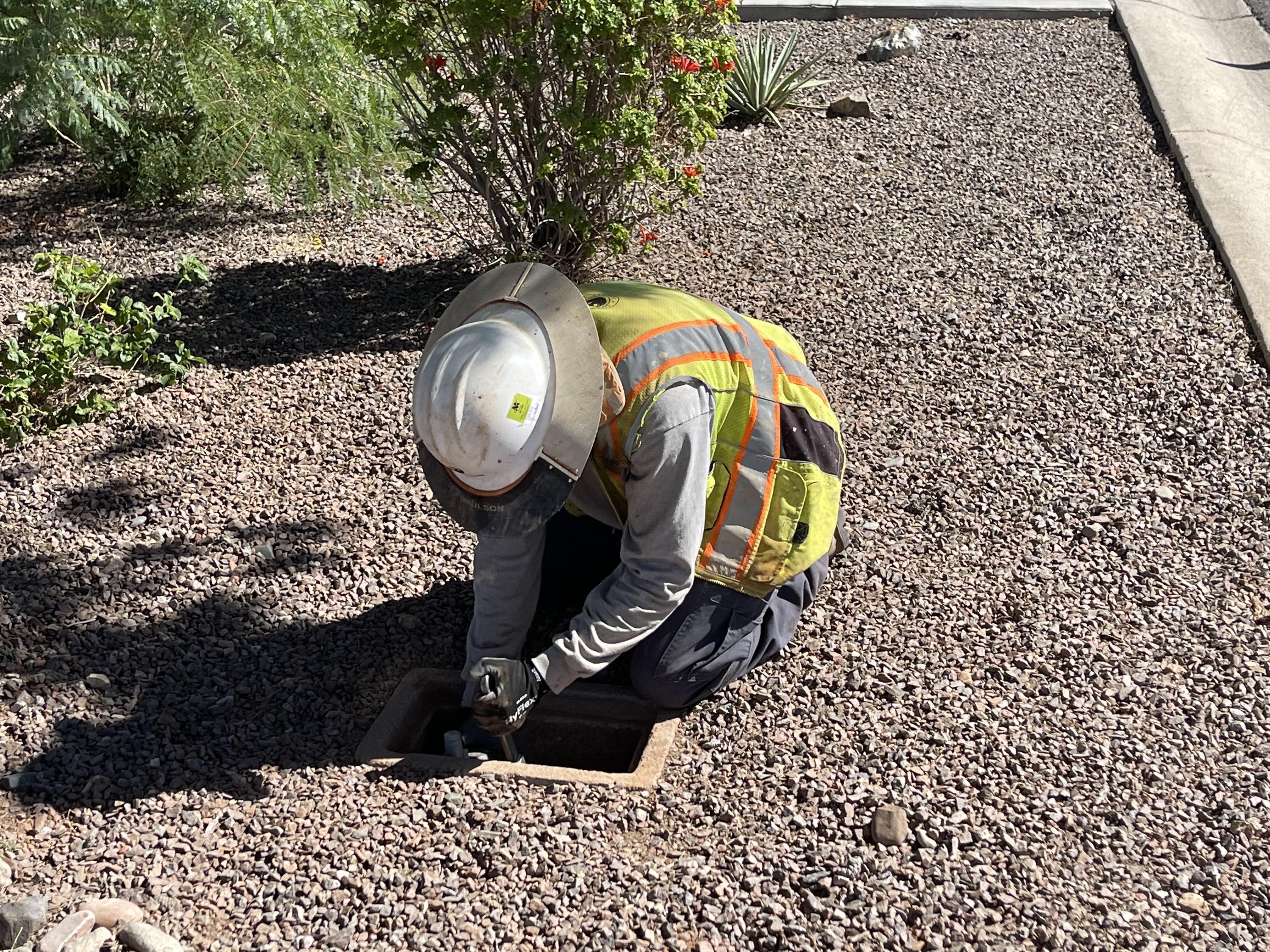
What is a Service Line?
A service line is an underground pipe that connects your home to the City's water main.
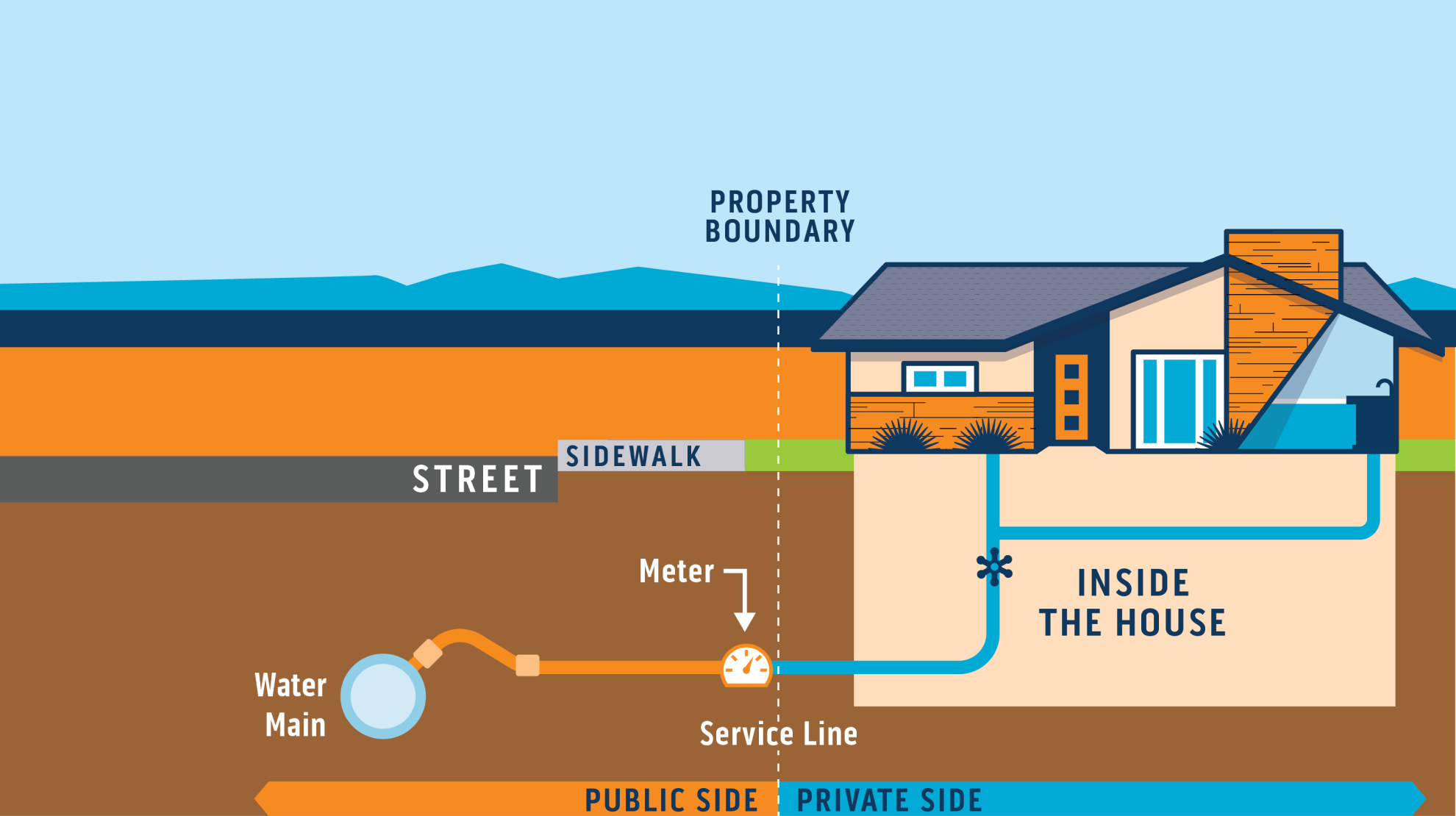
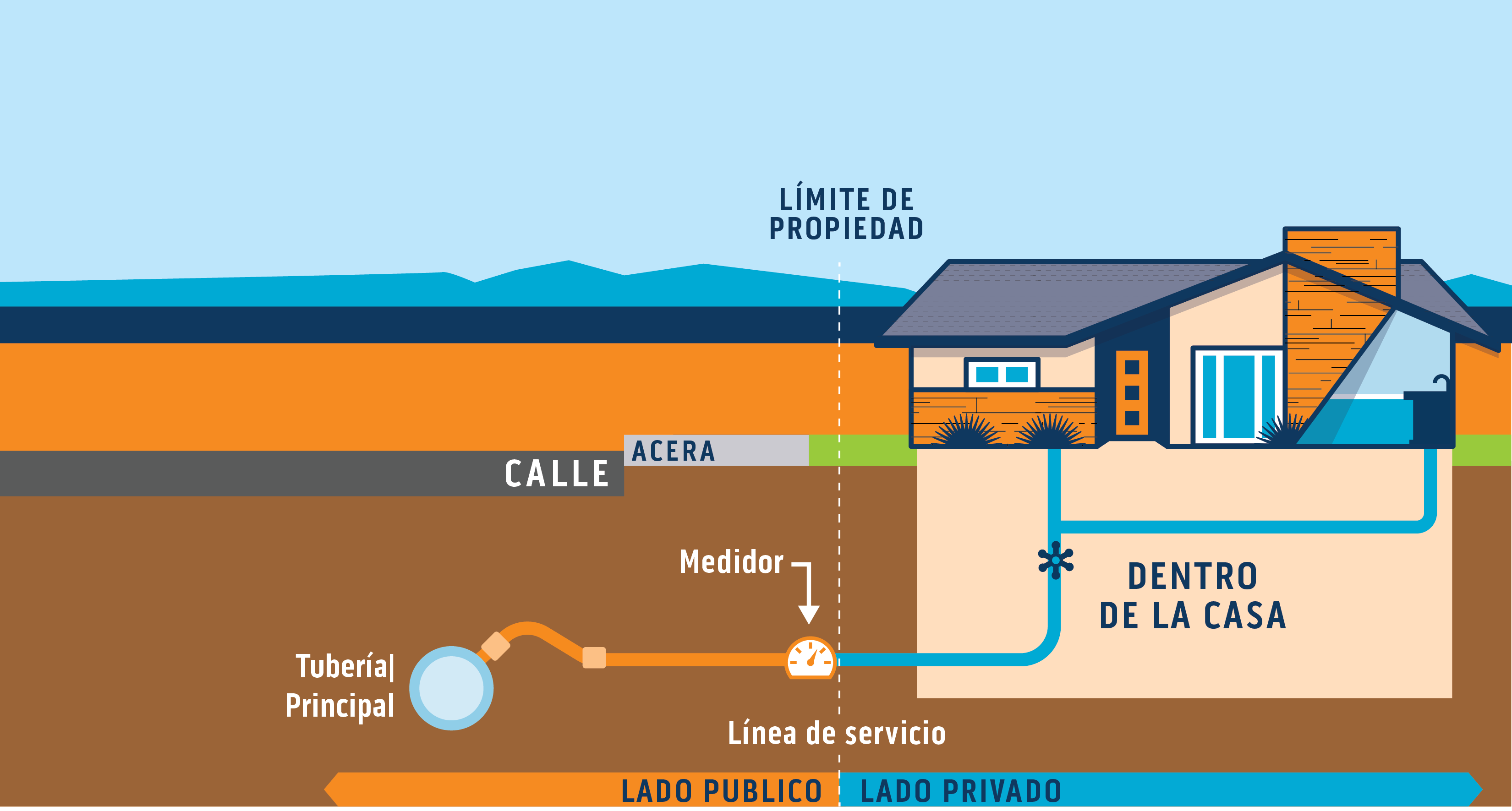
Your Service Line Material
The City is looking at the materials which make up the City's water infrastructure as part of the EPA's program to meet enhanced drinking water standards. When we know what our service lines are made from, we can proactively plan for the replacement of service lines that may pose a health risk due to corrosion that happens over time.
We are investigating service lines to find out if they fall into one of four material categories.
Click or tap the icons below to learn more.
Lead
 Lead pipe
Lead pipe
Lead
We know there is a health risk associated with lead. City of Phoenix Standards and Specifications discontinued the use of all-lead service lines in 1938. At this time, galvanized materials were still allowed. The City later adopted an ordinance prohibiting the use of all lead water pipes and fittings in 1977, preceding the State of Arizona's adoption of the EPA's 1986 Safe Drinking Water Act, which banned the use of lead nationally.
If your service line is identified as lead, the City will contact you with next steps regarding replacement.
Did you know lead can be found throughout your home? Common sources of lead in your home can include paint, toys, candy, cosmetics, pottery, spices, or soil. Learn more.
Galvanized
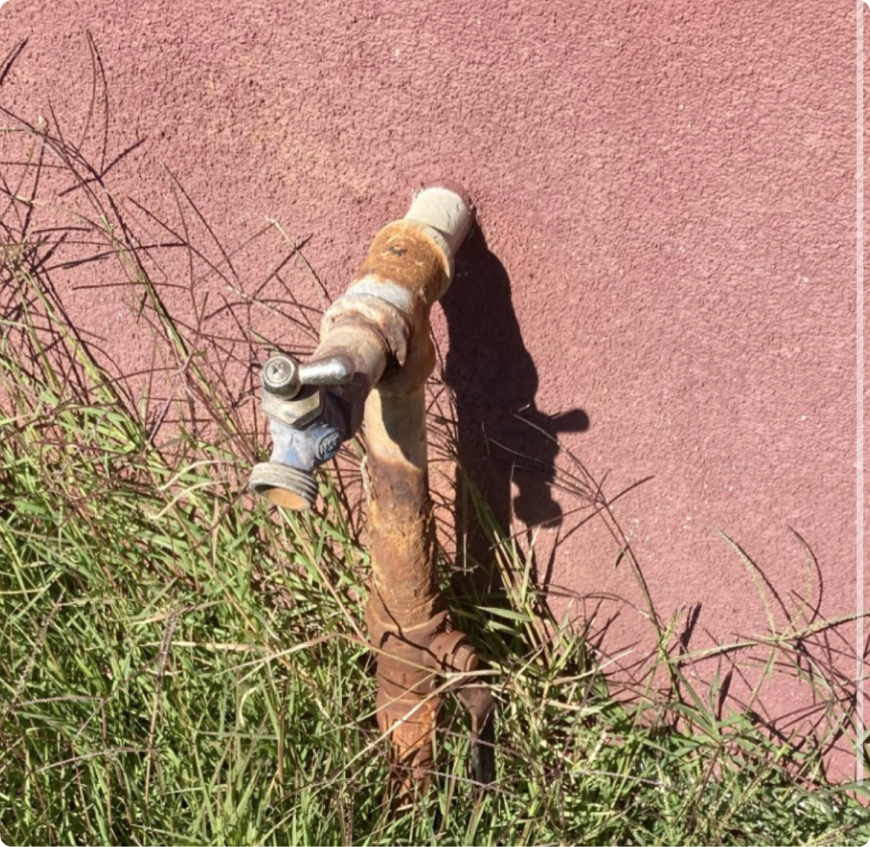 Galvanized pipe
Galvanized pipe
Galvanized
After the City discontinued the use of lead in 1938, many service lines were made of galvanized steel (a pipe coated with zinc to prevent corrosion and rust). But, galvanized service lines can also pose a health risk because the zinc coating corrodes over time, potentially leaching lead particles into the galvanized service line. The City discontinued the use of galvanized service lines in 1983.
If your service line is identified as galvanized, the City will contact you with next steps regarding replacement.
Other
 Copper pipe
Copper pipe
Other materials
The City now primarily uses long-lasting and safe copper piping. Copper, plastic, and PVC service lines are all safe alternatives to lead and galvanized materials. If we find these materials during our service line inventory, no further action is required to replace or monitor your line for risk of lead exposure.
Unknown
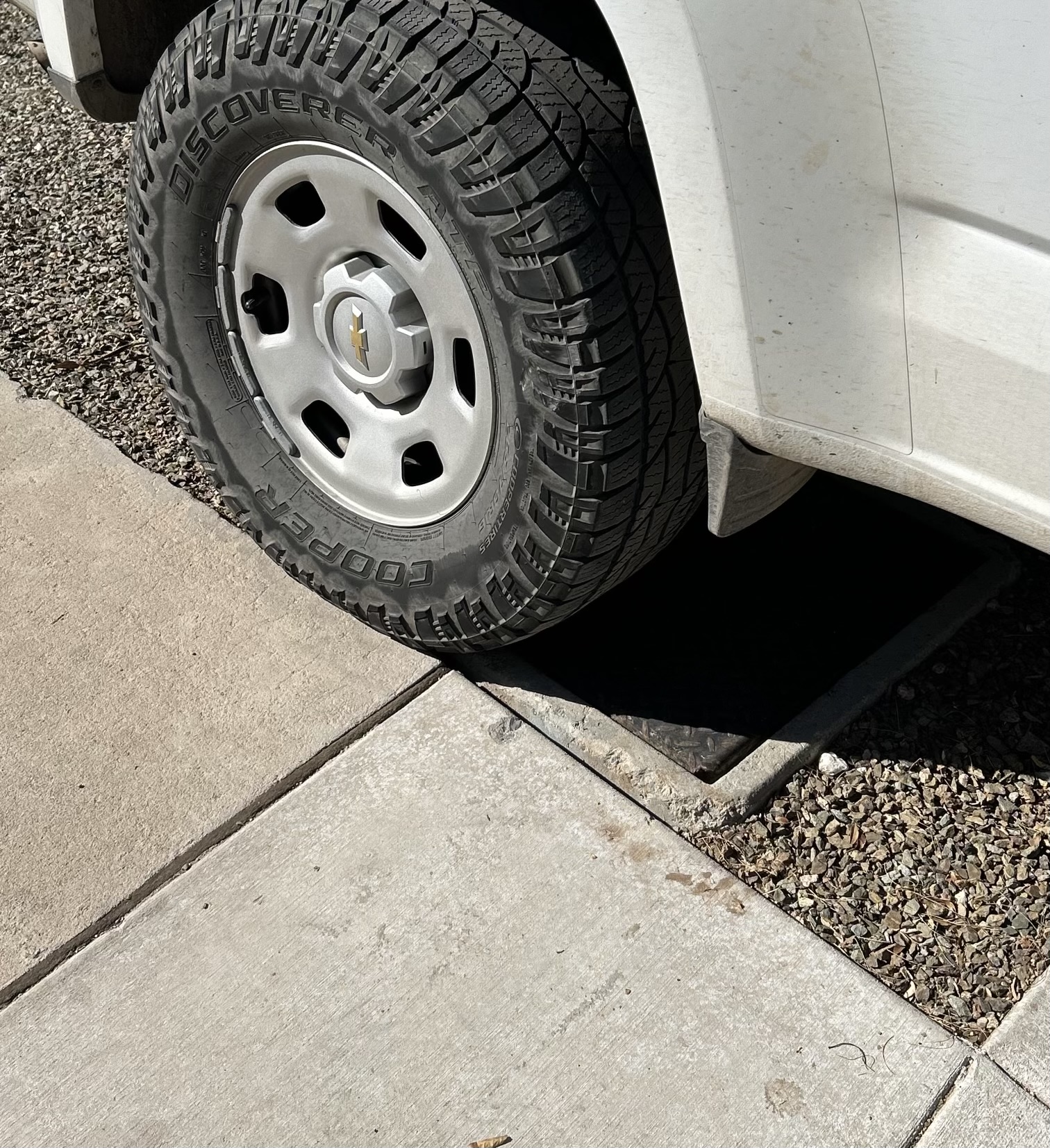
Unknown
Service lines marked as unknown are unlikely to be lead. There are a few reasons your line may be marked as an unknown:
- Historical data did not document the type of material used in your line.
- Your service line was inaccessible during our initial investigations.
If your service line is marked as unknown, the City will follow up with a second form of verification, next steps, and notices regarding your service line material.
Service Line Replacement Process
When a customer’s water service line is identified as galvanized, the City of Phoenix Water Services Department (or their contractor) will schedule a replacement. The following is a step-by-step process for replacing your service lines:
- Assess property
- Sign replacement contract (customer)
- Schedule replacement time
- Replace water line
- Restore water service
- Flush water lines (customer)
- Restore disturbed area
Full water service line replacement includes replacing the line from the city meter box to hose bib or connection at the house/building. The City covers the entire cost of this service line replacement work.
Our Progress
In October 2024, the City published its inventory with ADEQ. In the unlikely event that lead is discovered, immediate action will be taken. If galvanized material is found, we will begin the monitoring and replacement process.
Use the arrows to view each step of the inventory process.
-
Visual Inspections Completed March 2024
Visual inspections of water service lines were completed in March 2024.
-
Records Review Ongoing
The City uses historical data and documentation of infrastructure materials to determine what service lines are made of. From here, we can identify which service lines may require further investigation or onsite verification.
-
Triennial Sampling Ongoing through 2024
The City completed its triennial monitoring, which includes water sampling, in 2021. The 2024 monitoring is ongoing. This process will repeat again in 2027 or 2028.
-
Lead and Copper Rule Improvement (LCRI) October 8, 2024
The federal government has made a decision regarding updates to the current Lead and Copper Rule Revision (LCRR), known as the LCRI. The City is prepared to adjust its programming to meet these newly solidified standards.
-
Publish Inventory Results October 16, 2024
Our publicly available inventory with all the information collected through records review and visual inspections has been approved by the ADEQ. It can be found by viewing the inventory.
-
Service Line Type Notifications November 15, 2024
If your service line has been identified as lead, galvanized requiring replacement, or unknown, the City sent you a mail notification including next steps in the identification and potential replacement process.
-
Service Line Replacement Starting in Fall 2024
If your service line is identified as needing replacement, the City will initiate a process of monitoring (including water sampling) and take steps toward replacing your service lines. You will be contacted by the City regarding each of these steps.
-
LCRR Sampling Future
Based on the new regulations within the LCRI, the City will begin their annual monitoring and testing program for residential and business customers, with a focus on schools and childcare facilities. This sampling and monitoring will occur for at least five years.
Frequently Asked Questions
Download a PDF VersionLead is a naturally occurring metal that is all around us. It was used for many years in paints, plumbing, and other products found in and around homes. The U. S. Environmental Protection Agency has determined that exposure to lead in drinking water can cause serious health effects in all age groups. Fortunately, drinking water is not a common source of lead poisoning in Arizona. Visit Lead Safe Phoenix at Neighborhood Services Lead Safety (phoenix.gov) for more information.
According to the EPA, lead in drinking water is mainly due to the corrosion of service lines and household plumbing materials. Therefore, the EPA has established the Lead and Copper Rule under the Safe Drinking Water Act to protect public health by ensuring utilities have proper corrosion control.
Yes, the City of Phoenix finalized an extensive corrosion control study and used these results to develop a corrosion control plan for the water system. The City's corrosion control plan is approved by the Arizona Department of Environmental Quality and the Maricopa County Environmental Services Department.
To prove the effectiveness of our corrosion control plan, the City monitors daily for designated water quality parameters at the entry points to the distribution system at the water treatment plants and in the distribution system during the triennial monitoring year.
The City is approved for reduced monitoring by the Arizona Department of Environmental Quality (ADEQ) for Lead and Copper. The City monitors at customer's homes once every three years to determine the 90th percentile for Lead and Copper.
Tap water monitoring for lead and copper is used to assess the effectiveness of corrosion control treatment. Per EPA regulations, 90 percent of taps tested from inside consumers' homes must not exceed a lead concentration of 15 ppb.
| Results of Lead Sampling from Residential Water Taps | ||||||||
|---|---|---|---|---|---|---|---|---|
| Action Level - 90% of taps tested must not exceed 15 ppb | ||||||||
| Year* | 90% of taps were less than or equal to this value | Number of sites above the Action Level | ||||||
| 2021 | 4 ppb | Three (3) out of 71 taps sampled | ||||||
| 2020 | 3 ppb | Two (2) out of 61 taps sampled | ||||||
| 2018 | 3 ppb | Two (2) out of 54 taps sampled | ||||||
| *The State of Arizona allows the City to monitor for some contaminants less than once per year because the concentrations of these contaminants do not change frequently. | ||||||||
Phoenix has been supplying water to customers for more than 100 years. While records indicate that lead service lines did exist in Phoenix's water service territory, it was standard protocol to remove lead service lines any time they were encountered or discovered by Phoenix Water Services employees. The last documented lead service line replacements took place in the early 1990s. If the city were to come across any lead service lines during maintenance and repairs, our protocol still stands to replace them.
Phoenix water is clean, high quality, and safe to drink. Public health, economic development, and quality of life here in our desert city are contingent upon a reliable and safe tap water supply. More than five million tests and measurements are conducted each year to ensure high quality tap water in Phoenix. Our water is tested for more than 100 substances, and is monitored throughout the year to ensure that it meets the rigorous standards set forth by the U.S. Environmental Protection Agency (EPA), the Arizona Department of Environmental Quality, and the Maricopa County Environmental Services Department.
Phoenix makes wise investments in the rehabilitation and replacement of aging water infrastructure in support of reliable water deliveries and public health. Phoenix Water is committed to ensuring clean, safe, dependable water supplies now and for generations to come.
The last known documented lead service line replacements took place in the early 1990s and Phoenix actively continues to identify unknown service lines and replace any lead or galvanized lines identified during maintenance and repairs. Phoenix also has a Lead Service Line Replacement Plan in place to replace lead or galvanized service lines and will contact customers with next steps if their service line requires replacement.
In 1986, Congress enacted the “lead ban,” which stated that public water systems, along with drinking water plumbing connected to a public system, must use “lead-free materials.” As a result, homes built after the ban took place are less likely to have lead solder. The last documented lead service line replacements took place in the early 1990s. If the city were to come across any lead service lines during maintenance and repairs, our protocol still stands to replace them.
Additionally, Phoenix has conducted an extensive service line identification program and inventory of non-lead, lead, galvanized, and unknown services lines per EPA regulations. View the inventory.
In addition to using a water filter certified to reduce lead by the American National Standards Institute, Phoenix recommends you flush the cold water faucet until the water gets noticeably cooler before using it for drinking or cooking anytime the water in the faucet has gone unused for more than six (6) hours. Phoenix encourages the reuse of this water by capturing it to reuse for gardening or car washing and encourages customers to take the Save Water Pledge. Visit Water Services The Phoenix Mayor's Save Water Pledge to learn more.
Yes. In the large majority of the population, bathing and showering is safe for adults and children as human skin does not absorb lead in water. Lead in water will not be absorbed by porcelain, metal, plastic or glass dishware.
Customers can contact the Arizona Department of Health Services for a list of laboratories certified to perform lead testing at www.azdhs.gov.
Read Phoenix Water's annual water quality reports, which describe the overall quality of water from its raw collection and storage to the treated purity at your tap.
History of Lead and Copper in Phoenix
Click or tap the dots for more events.
1938
The City of Phoenix Standard and Specifications disallow lead as a service line material on the utility-side.
1977
City of Phoenix Plumbing Code disallow lead as a service line material on the customer side.
1986
Safe Drinking Water Act Lead Ban
The 1986 Safe Drinking Water Act Lead Ban required the use of "lead-free" pipe, solder, and flux in the installation or repair of any public water system or any plumbing in residential or non-residential facility providing water for human consumption.
1988
State of Arizona Lead Ban
The State of Arizona adopted the SDWA Lead Ban. The City, through an ordinance, amended the plumbing code portion of the construction code to prohibit the use of solders and fluxes with a lead content of more than 0.02% in brass and copper and to eliminate the use of lead water pipes.
1991
Lead and Copper Rule
The 1991 Lead and Copper Rule (LCR) established a maximum contaminant level goal of zero for lead in drinking water. Learn more.
2017
Arizona Statewide Screening Program
The ADEQ initiated a six-month, statewide screening program for lead in public school district drinking water. Thanks to the overwhelming support from elected officials, local agencies, municipal public water providers and Arizona public school districts, this successful program has benefited Arizona's children's health and confirmed that drinking water in public school districts is not a common source of lead in Arizona.
2021
Lead and Copper Rule Revisions
The Environmental Protection Agency (EPA) published the Lead and Copper Rule Revisions (LCRR) on January 15, 2021. Learn more.
Lead Pipe and Paint Action Plan
Replacing lead pipes is a centerpiece of the Bipartisan Infrastructure Law (Infrastructure Investment and Jobs Act), which was passed on November 15, 2021. Learn more.
2024
Compliance
As of October 16, 2024, the City of Phoenix is in compliance with the Lead and Copper rule revisions. Learn more.
2027
In December 2024 the EPA finalized revisions to the LCRR. These updates are known to as the Lead and Copper Rule Improvements (LCRI). The City will update its program to continue to meet these new standards by 2027.
There is no safe level of lead in drinking water. Exposure to lead in drinking water can cause serious health effects in all age groups, especially pregnant people, infants (both formula-fed and breastfed), and young children. Some of the health effects to infants and children include decreases in IQ and attention span. Lead exposure can also result in new or worsened learning and behavior problems. The children of persons who are exposed to lead before or during pregnancy may be at increased risk of these harmful health effects. Adults have increased risks of heart disease, high blood pressure, kidney, or nervous system problems. Contact your healthcare provider for more information about your risks.